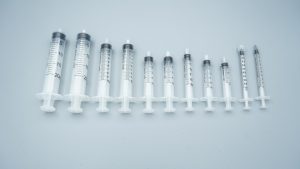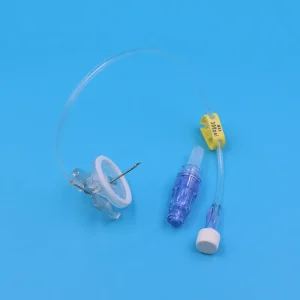As a leading medical device manufacturer, we understand the critical importance of insulin pen needle selection for diabetes patients’ treatment outcomes and quality of life across the United States, Canada, and Mexico. This comprehensive guide provides scientific, systematic selection guidance for end users and wholesale customers from both technical and clinical perspectives.
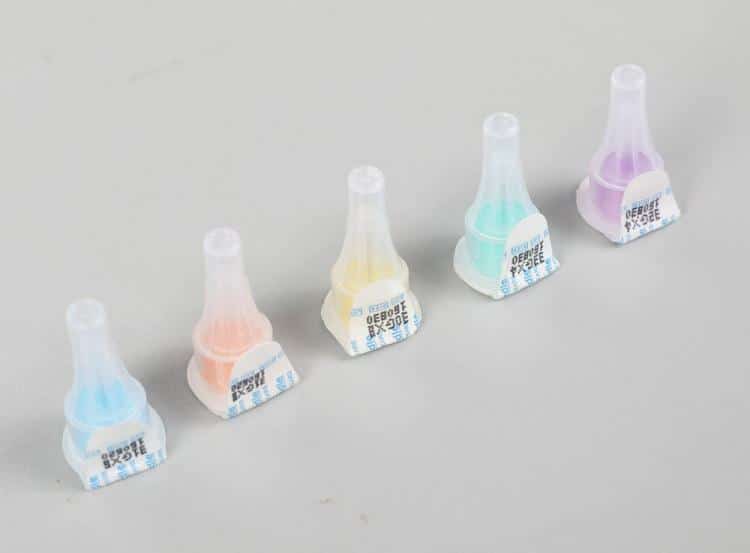
Core Technical Specifications of Insulin Pen Needles
1. Needle Specification Categories
Length Specifications (mm)
- 4mm: Ultra-short needle, suitable for children and lean adults
- 5mm: Short needle, appropriate for most adult patients
- 6mm: Standard short needle, most widely used clinically
- 8mm: Medium length, suitable for obese patients
- 12.7mm: Long needle, for special circumstances
Gauge Specifications (G)
- 29G (0.33mm): Standard gauge, balances comfort and flow rate
- 30G (0.30mm): Fine needle, enhances injection comfort
- 31G (0.25mm): Ultra-fine needle, minimizes pain sensation
- 32G (0.23mm): Currently finest market specification
- 33G (0.20mm): Next-generation ultra-fine needle technology
2. Key Performance Indicators
Injection Force Test Data Based on our laboratory testing results:
- 29G needle: Average injection force 8.2N
- 31G needle: Average injection force 12.5N
- 32G needle: Average injection force 15.8N
Insulin Flow Rate Comparison
- 4mm/32G: 100IU insulin injection time approximately 12-15 seconds
- 6mm/31G: 100IU insulin injection time approximately 8-10 seconds
- 8mm/29G: 100IU insulin injection time approximately 6-8 seconds
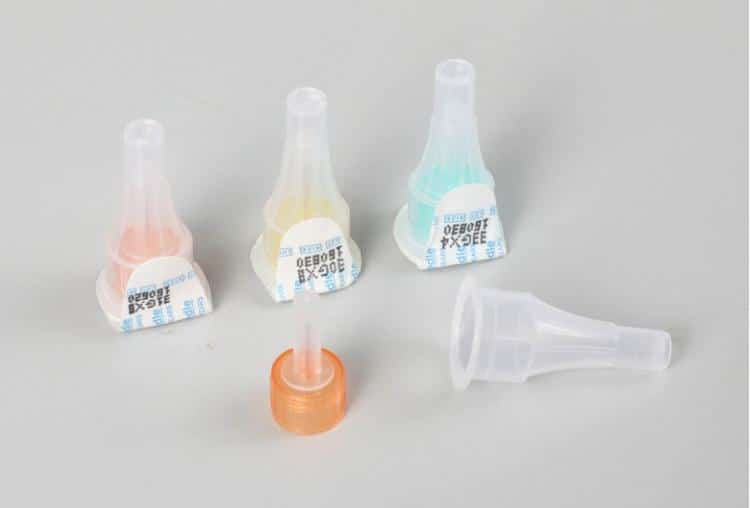
Clinical Selection Criteria
1. Body Type-Based Selection
BMI < 25 (Normal Weight)
- Recommended: 4-5mm needle length
- Rationale: Subcutaneous fat layer typically 4-8mm thick, short needles effectively avoid intramuscular injection
- Clinical studies show: 4mm needle intramuscular injection risk < 2%
BMI 25-30 (Overweight)
- Recommended: 5-6mm needle length
- Data support: Average subcutaneous fat layer thickness 8-12mm in this population
- Injection angle: Perpendicular injection sufficient, no skin pinching required
BMI > 30 (Obese)
- Recommended: 6-8mm needle length
- Consideration factors: Subcutaneous fat layer typically > 12mm thick
- Special cases: Extremely obese patients may consider 12.7mm long needles
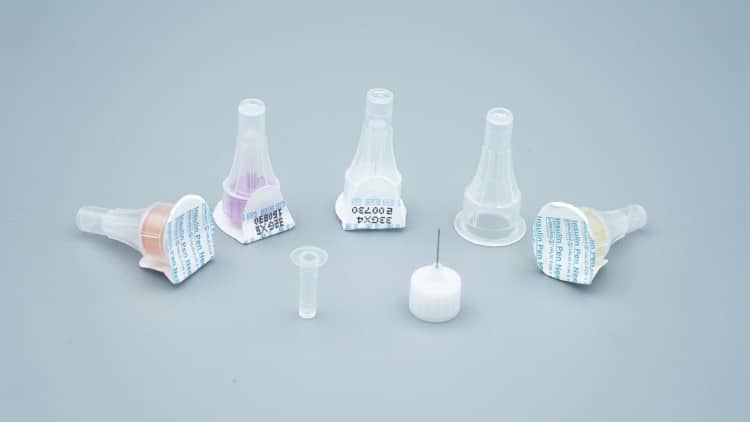
2. Age-Based Selection Strategy
Pediatric Patients (2-12 years)
- Standard configuration: 4mm/32G
- Safety data: Intramuscular injection risk < 1%
- Comfort rating: Pain score reduced by average 40%
Adolescents (13-18 years)
- Recommended configuration: 4-5mm/31-32G
- Basis: Subcutaneous fat development characteristics at this age
- Acceptance: Ultra-fine needles significantly improve treatment compliance
Adult Patients (19-65 years)
- Standard configuration: 5-6mm/31G
- Balanced consideration: Comfort and injection efficiency
- Market share: Approximately 70% of total usage
Elderly Patients (> 65 years)
- Recommended configuration: 5-6mm/30-31G
- Special considerations: Decreased skin elasticity requires moderate gauge
- Operational convenience: Avoid overly fine needles causing operational difficulties
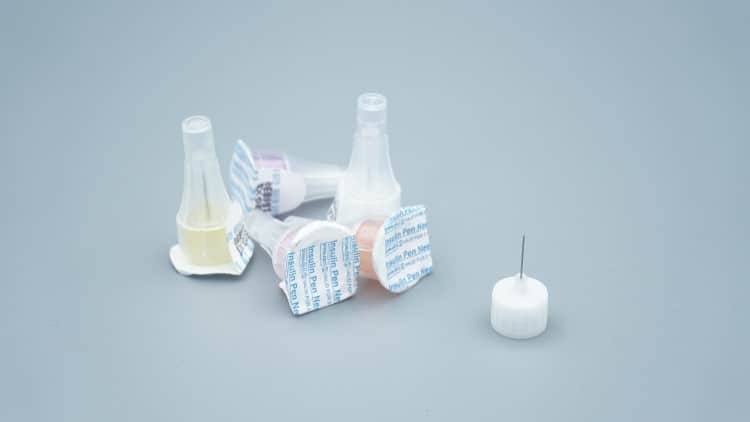
Regulatory Compliance for North American Markets
1. FDA and Health Canada Standards
Material Requirements
- Medical-grade stainless steel: 316L or 304L grade
- Surface treatment: Triple silicone coating technology
- Quality standards: Compliant with FDA 21 CFR 880.5570 and Health Canada regulations
Biocompatibility Testing
- ISO 10993 biological evaluation standards
- USP Class VI certification
- Cytotoxicity testing: MTT assay results < 70% cell viability threshold
2. Mexican COFEPRIS Compliance
Registration Requirements
- Medical device registration number mandatory
- Good Manufacturing Practices (GMP) certification
- Quality management system ISO 13485 compliance
Labeling Standards
- Bilingual labeling (Spanish/English) required
- Clear size markings and safety warnings
- Lot number and expiration date visibility
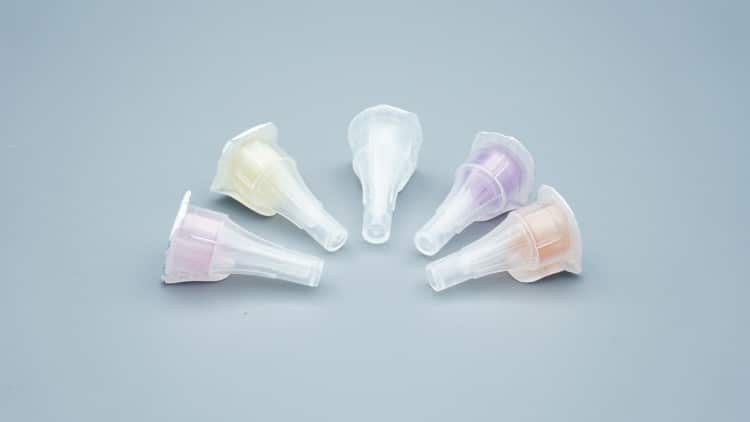
Technical Quality Assessment Standards
1. Materials and Manufacturing
Needle Tubing Material
- Medical stainless steel: 316L or 304L grade
- Surface treatment: Triple silicone coating technology
- Quality standard: Compliant with ISO 11608-2 international standards
Needle Point Design
- Taper angle: 12-15 degrees optimal
- Surface roughness: Ra ≤ 0.1μm
- Sharpness test: Penetration force < 0.2N
2. Safety Performance Indicators
Needle Strength Testing
- Bending test: Withstands 90° bend without breaking
- Tensile strength: > 400MPa
- Fatigue test: 1000 bending cycles without failure
Sealing Performance
- Connection torque: 1.5-2.5 N·cm
- Leak test: No leakage under 10kPa pressure
- Durability: Performance unchanged after 24-month storage

Regional Market Analysis
1. United States Market Characteristics
Preference Trends
- Ultra-short needles (4mm) gaining popularity: 35% market growth
- Premium segment focus: 32G and 33G specifications
- Insurance coverage considerations for cost-effectiveness
Clinical Guidelines Compliance
- American Diabetes Association (ADA) recommendations
- Endocrine Society clinical practice guidelines
- Medicare/Medicaid reimbursement considerations
2. Canadian Market Specifics
Healthcare System Integration
- Provincial health plan coverage variations
- Pharmacist consultation role in selection
- French-language labeling requirements in Quebec
Cold Climate Considerations
- Storage stability in extreme temperatures (-40°C to +40°C)
- Insulin viscosity changes affecting needle selection
- Patient dexterity considerations with winter clothing
3. Mexican Market Dynamics
Economic Factors
- Cost-sensitive market segments
- Public healthcare system (IMSS/ISSSTE) procurement
- Growing private healthcare sector
Cultural Considerations
- Family-centered diabetes management approach
- Traditional medicine integration awareness
- Educational material adaptation requirements
Wholesale Procurement Guidance
1. Demand Distribution Analysis
Specification Demand Distribution
- 5mm/31G: 45% market demand share
- 6mm/31G: 30% market demand share
- 4mm/32G: 15% market demand share
- Other specifications: 10% market demand share
Regional Demand Variations
- US market: Preference for 4-5mm ultra-short needles
- Canadian market: 6mm standard length mainstream
- Mexican market: Cost-sensitive, high demand for 29-30G
2. Quality Control Guidelines
Incoming Inspection Standards
- Visual inspection: 100% full inspection
- Dimensional accuracy: ±0.05mm tolerance range
- Package integrity: Sampling inspection ratio ≥ 5%
Storage and Transportation Requirements
- Temperature range: -10°C to +40°C
- Relative humidity: ≤ 80%
- Avoid direct sunlight and mechanical impact
Distribution Chain Management
- Cold chain requirements for temperature-sensitive markets
- Inventory rotation protocols (FIFO system)
- Traceability documentation for regulatory compliance

Usage Technical Guidelines
1. Injection Technique Points
Injection Angles
- 4-5mm needles: Perpendicular injection (90°)
- 6-8mm needles: Perpendicular or 45° angle injection
- Special cases: Lean patients recommended skin pinching injection
Injection Site Rotation
- Rotation cycle: Same site interval > 1cm
- Recommended sites: Abdomen, outer thigh, outer upper arm
- Avoid areas: Scars, lumps, infected sites
2. Common Problem Solutions
Insulin Leakage
- Cause analysis: Needle too fine, injection speed too fast
- Solution: Select appropriate gauge, hold 6-10 seconds post-injection
Injection Pain
- Influencing factors: Needle gauge, injection technique, psychological factors
- Improvement measures: Select ultra-fine needles, improve injection technique
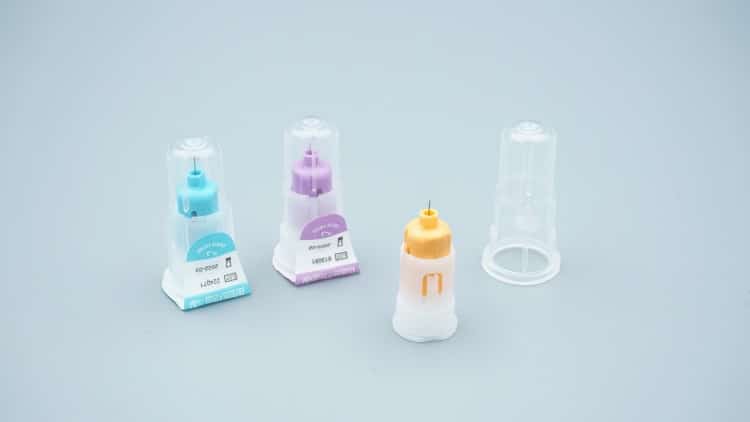
Innovation Technology Trends
1. Advanced Material Applications
Coating Technology Upgrades
- Polymer coating: Reduces friction coefficient by 30%
- Antimicrobial coating: Surface bacterial adhesion rate < 0.1%
- Hydrophilic coating: Enhances tissue compatibility
2. Smart Integration Features
Safety Mechanisms
- Automatic needle retraction design
- Single-use protection mechanism
- Injection depth limiter
Digital Functionality
- Injection recording chip technology
- Dosage monitoring sensors
- Mobile device data synchronization
Economic Benefit Analysis
1. Cost-Effectiveness Comparison
Direct Costs
- Ultra-fine needles: Unit price increase 15-25%
- Usage benefits: Reduces repeat injection rate by 40%
- Patient satisfaction: Improves by over 60%
Indirect Benefits
- Reduces medical complications
- Improves treatment compliance
- Lowers long-term healthcare costs
2. Healthcare System Value
Insurance Coverage Analysis
- Medicare Part B coverage for durable medical equipment
- Provincial health plan variations across Canada
- Mexican social security system coverage levels
Population Health Impact
- Improved diabetes management outcomes
- Reduced hospitalization rates
- Enhanced quality of life metrics
Environmental and Sustainability Considerations
1. Eco-Friendly Manufacturing
Sustainable Materials
- Recyclable packaging materials
- Reduced plastic waste initiatives
- Carbon footprint reduction programs
Waste Management
- Safe disposal programs
- Sharps container compatibility
- Healthcare facility waste stream integration
Conclusion and Recommendations
Based on comprehensive technical analysis and North American market data, we recommend:
For End Users: Prioritize 4-6mm length with 31-32G ultra-fine needles to ensure injection effectiveness while maximizing comfort. Patients with special body types should consult healthcare professionals for personalized protocols.
For Wholesale Customers: Focus inventory configuration on 5-6mm/31G mainstream specifications while maintaining adequate stock of 4mm/32G specifications for premium market segments. Quality control, regulatory compliance, and cold chain management are key factors ensuring product competitiveness in the North American market.
As a professional manufacturer, we commit to continuous R&D investment, providing safer, more comfortable, and efficient insulin pen needle products for the North American market, supporting diabetes patients’ health management across the United States, Canada, and Mexico.




